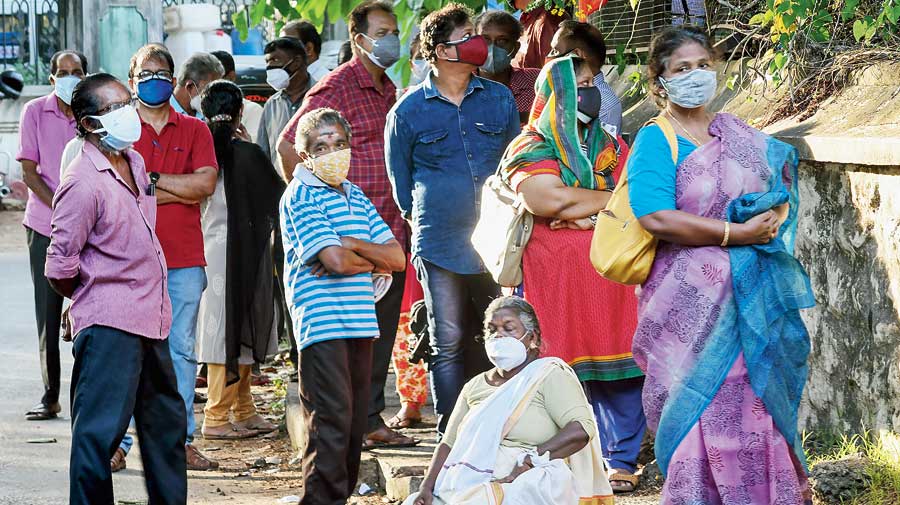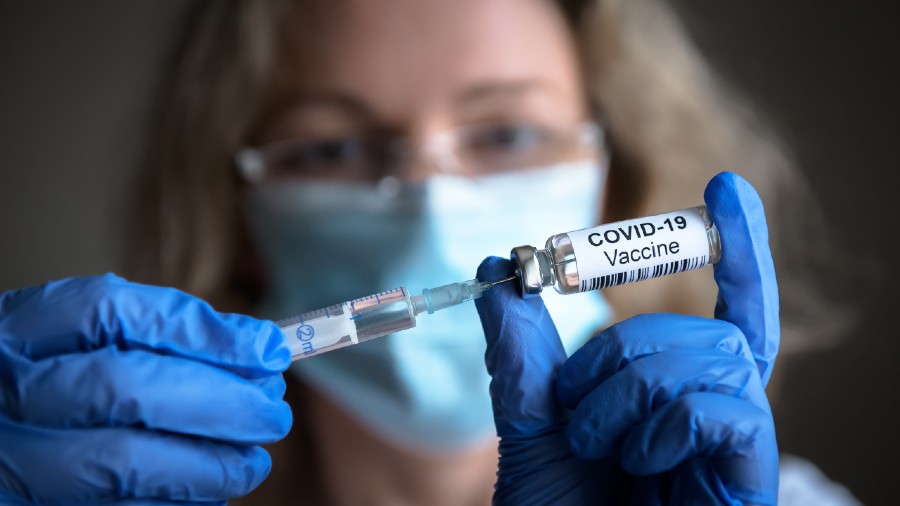Post-vaccination Covid-19 infections in Kerala’s Pathanamthitta district appear to be a mystery to some central public health officials, but not so for state health and other medical experts.
Central health officials are trying to understand the circumstances under which over 20,000 vaccinated people in Pathanamthitta developed Covid-19, a senior health official said on Tuesday, triggering surprise among other medical experts.
Sujeet Singh, director of the National Centre for Disease Control, New Delhi, said a central public health team had learnt from the Pathanamthitta district administration that 14,974 people were infected after the first dose and 5,042 after the second dose.
“We’re getting these things reviewed by the state — how long after the second dose did the person turn positive, what was the severity of the disease, whether the person had mild or severe disease or required hospitalisation,” Singh said. “Not only from Pathanamthitta, but from other districts as well. We are waiting for this information.”

But medical experts said the numbers of post-vaccination infections by themselves told nothing unless they were placed in context with other critical information such as the total number of vaccinated people in the district and the local infection transmission patterns.
“I’m surprised that post-vaccination infection numbers are cited without any context,” a senior medical researcher in a New Delhi institution who requested not to be identified told The Telegraph. “It is kind of irresponsible.”
Pathanamthitta has among the highest proportions of vaccinated population in the country, a physician and member of Kerala’s Covid-19 task force said. Around 70 per cent of the population has received one dose and 33 per cent of the population has got two doses.
State health records in the public domain show that more than 366,000 people in Pathanamthitta have received two doses and over 807,000 have got two doses.
“True breakthrough infections are those that occur two weeks or more after the second dose,” said T.S. Anish, a community medicine specialist at Trivandrum Medical College. “Only 258 of the 20,000 or so post-vaccination infections are after 14 days after the second dose,” Anish told this newspaper.
The medical researcher in Delhi said 258 breakthrough infections among over 366,000 of those vaccinated was “actually a small number”.
The number of breakthrough infections depends on both what proportion of the population is fully vaccinated and what percentage is still susceptible to the infection and the level of transmission at the site.
“Imagine, in one district, no one has been vaccinated, there the number of breakthrough infections will be zero,” Anish said. “If the rate of breakthrough infections is 10 in 100, the number will increase to 1,000 in a place where 10,000 people are vaccinated.”
Kerala’s low seroprevalence — the proportion of people protected by antibodies — of 44 per cent implies that 56 per cent had remained susceptible to the infection up to early July.
“This means the state’s public health measures during the first and second waves were strong enough to protect the majority of its people,” a public health expert said. “It also means more people are likely to be available in the population pool to cause breakthrough infections.”













